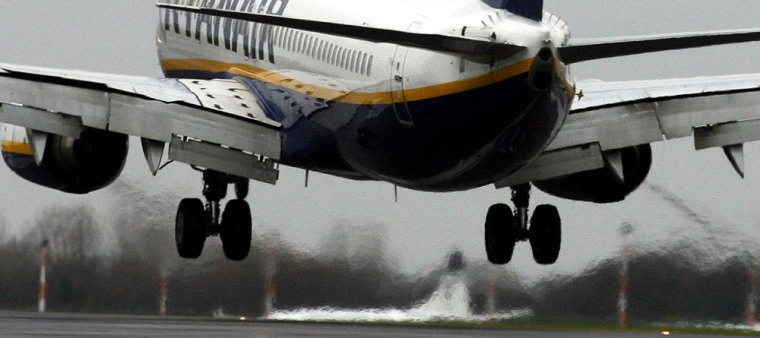I’m embarrassed to admit it, but I think I’m carbon positive.
I’ve been calculating my “carbon footprint” lately — i.e., the quantity of CO2 emissions my activities produce — and it’s not a pretty picture. Factor in the greenhouse gases produced during some recent travels and it’s clear that I could stand to shed a few tons.
But how? Do a Web search on “carbon neutral” these days and you’re likely to get slightly fewer hits than if you typed in “Paula Abdul bizarre behavior.” Follow the links to “carbon-neutral travel,” and you may see your upcoming travel plans in a whole new light.
Getting to zero
The idea is simple (although potentially tricky): If you can’t eliminate the global-warming emissions produced by driving or flying, offset them by supporting (i.e., donating to) projects that eliminate them elsewhere. If those projects reduce emissions in an amount equivalent to what you produced along the way, the net effect is carbon-neutral travel.
Unfortunately, that’s also where it can get tricky. There are dozens of companies and non-profit groups that will help you tally your travel-related emissions, but they use different formulas to calculate both the emissions and the cost of offsetting them. (Generally speaking, most charge $5–$25 per ton of emissions.) And there’s even less consensus on the value of the projects they support. Ask two offset-providers whether it’s more effective to fund wind farms or reforestation efforts, and you’re liable to get three answers.
So, what’s a carbon-conscious traveler to do? First, poke around the Web sites of several offset-providers to see how they’d calculate CO2 emissions from your proposed travels. (Most let you plug in flight distances and driving mileages, among other things.) Then dig a little deeper to see what offset projects they support. Do that on a few different sites, and you’ll have a much better sense of your options.
You can, of course, donate on any carbon-offset site, but an increasing number of travel providers are allowing travelers to make their trips carbon-neutral as part of the booking process. Here are three such companies and how they’re addressing the issue:
Your dollars at work
: According to the folks at The Conservation Fund, a Virginia-based non-profit group, each passenger on a roundtrip flight between New York and Los Angeles is responsible for approximately 1.23 tons of CO2 emissions. Book that flight on Travelocity and you can offset your emissions by donating $10 to the fund’s Go Zero program.
In a nutshell, Go Zero donations go to planting trees, mostly in the Lower Mississippi River Valley. (Over 70 years, say proponents, one tree removes the equivalent of 1.33 tons of CO2.) You can calculate the emissions from specific trips by using the fund’s Carbon Zero Calculator, then offset them with exact donations or at suggested levels of $10, $25 or $40.
: Supporting sources of clean, renewable energy offers another way to offset greenhouse gases. That’s the idea behind TerraPass, which Expedia users can purchase as a stand-alone item or as an “Activity” when customizing a trip. Offered at three levels — up to 2,200 roundtrip miles ($5.99), 6,500 miles ($16.99) and 13,000 miles ($29.99) — they’re calculated to offset 1,000, 2,500 and 5,000 pounds of emissions, respectively.
The money is used to support a variety of clean-energy projects. In California and Nebraska, wind farms feed electricity into local power grids, reducing the need for coal- and oil-generated power. In Minnesota and Washington, dairy farmers are turning manure into methane, which can then be used for on-site power or fed back into the grid. And in Chicago, the money is used to purchase and retire carbon-offset credits on the Chicago Climate Exchange, a voluntary cap-and-trade system.
: Many travel companies offer customers the opportunity to offset their travel-related emissions. REI Adventures, the tour division of the Seattle-based retailer, is going a step further. Instead of asking tour participants to pony up, the company itself is offsetting the emissions from its entire catalog of trips, including the emissions from the air travel clients incur getting to and from their destinations.
To do so, the company plans to purchase 52,000 renewable energy credits or “Green Tags” from the Bonneville Environmental Foundation this year. Used to support and develop clean-energy projects (mostly wind and solar) across the Pacific Northwest, the funds are expected to offset more than 36,000 tons of emissions. (Individuals who purchase their own Green Tags may also qualify for REI gift cards.)
Three companies, three different approaches, and yet, all would agree on at least one thing. If you’re going to travel, you should be aware of the effects of that travel, including the impact of your personal carbon footprint. Whether it’s by reducing emissions, offsetting them or a combination of the two, we could all stand to shed a few tons.
